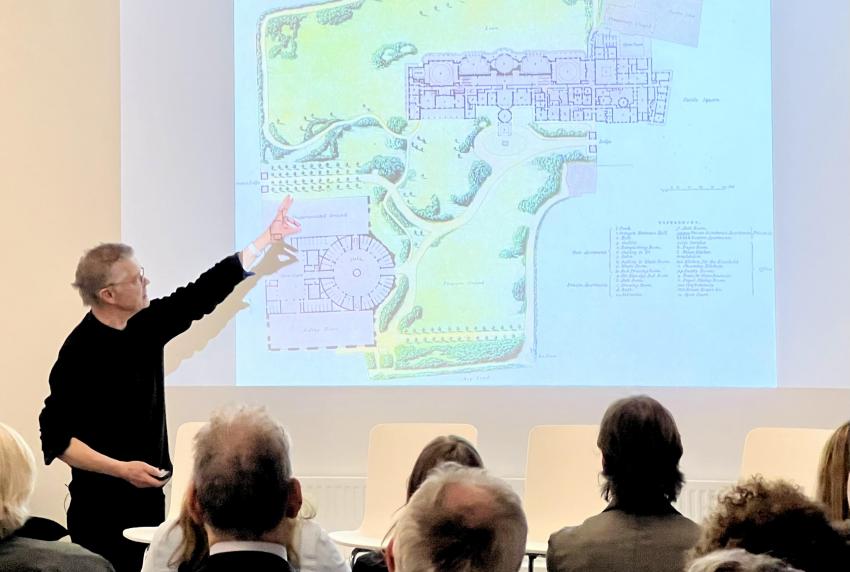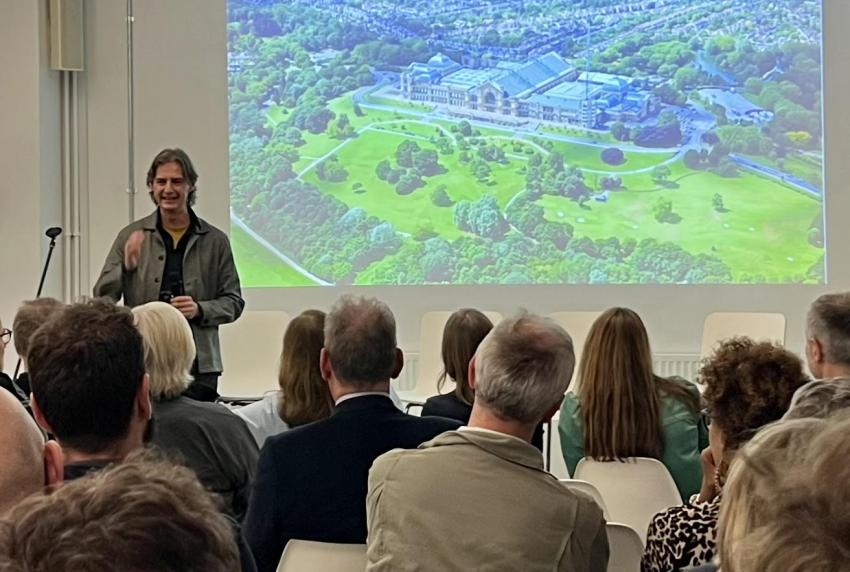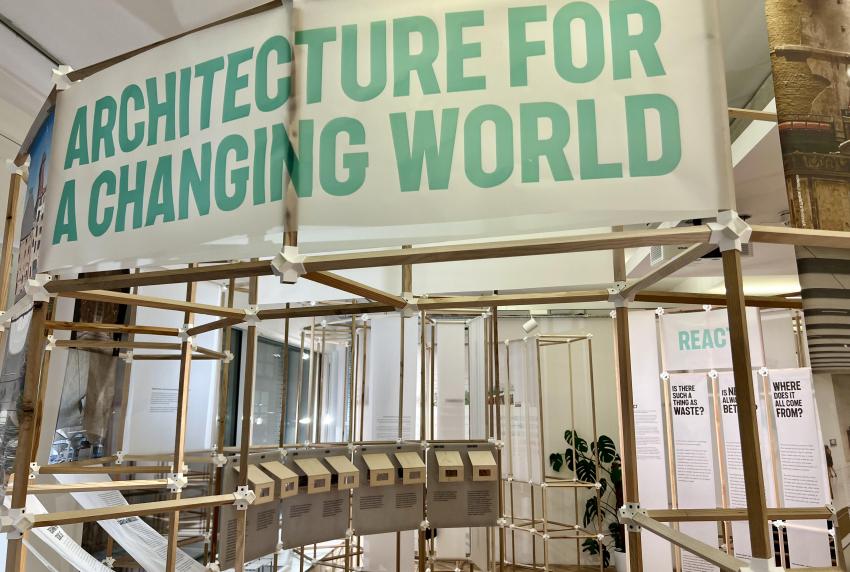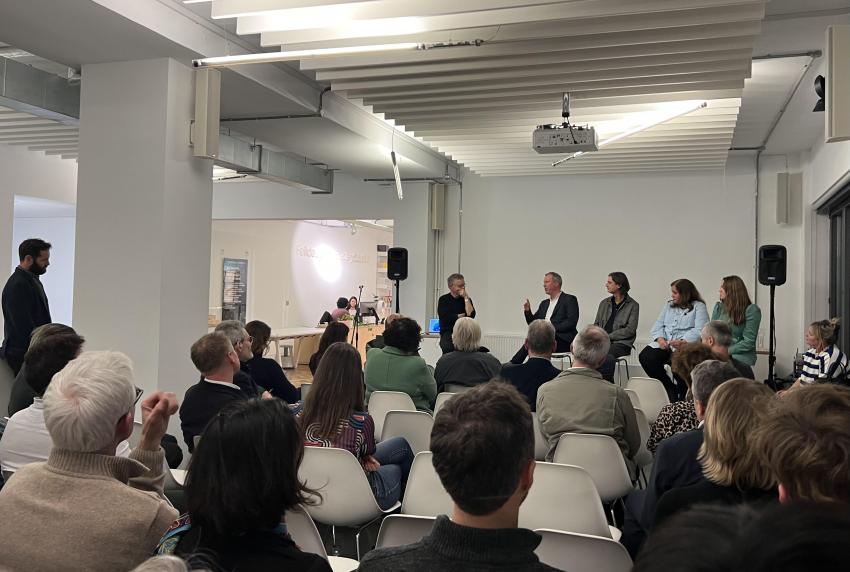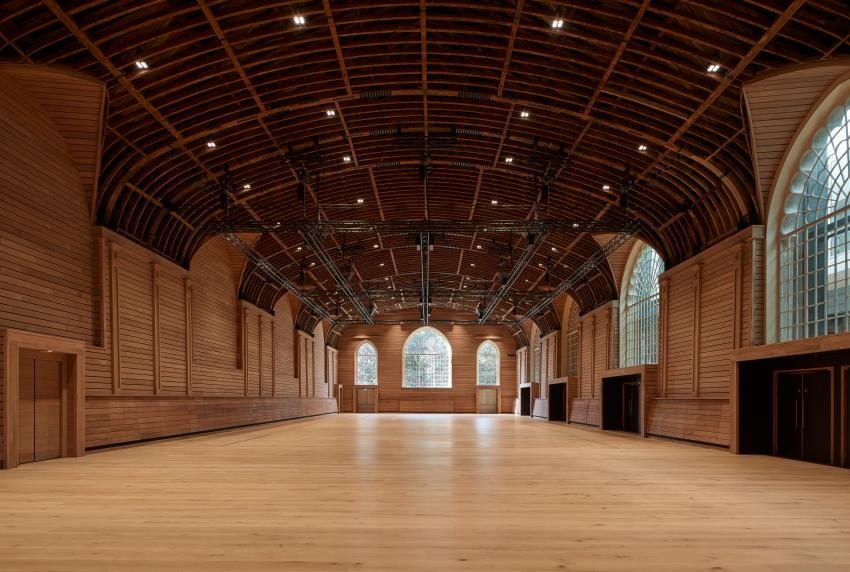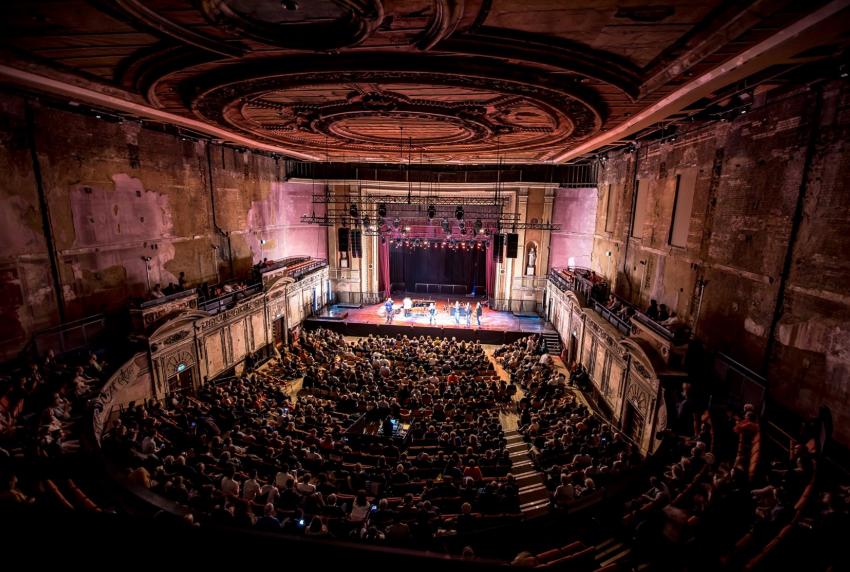FCBStudios/Charcoalblue
Architects & clients discuss design process for historic venues rejunvenation
On 29th February, we attended a presentation and panel discussion hosted by FCBStudios as part of a series of events held to accompany the 'Architecture for a Changing World’ exhibition, which is taking place at the firm's London gallery space. The discussion focused on the FCBStudios transformation - alongside Tenderstream member Charcoalblue - of two nationally significant venues, Brighton Dome’s Corn Exchange and Alexandra Palace’s East Wing. These projects exemplify one of the key strands of the exhibition, ‘Rejuvenate’, which highlights the importance of protecting, preserving and re-imagining cultural and community assets for future generations.
The event, led by FCBStudios founding partner Peter Clegg, was an opportunity to bring clients and architects together to reflect on their experiences throughout the design process. Both performance venues have had an extraordinarily varied series of uses over the years that have left their mark on the buildings in terms of their physical fabric and how they relate to the community and society at large. The question facing the designers and the clients was how to most responsibly preserve and unlock the heritage value of the buildings while maximising their potential as modern, flexible performance spaces.
From the Prince Regent’s riding school to performance venue
Before becoming an arts venue, Brighton Dome and Corn Exchange was built as a large-scale indoor riding school and stable for the Prince Regent’s horses, and subsequently had several changes of use including time as a Victorian roller-skating rink, and a WWI military hospital. Peter revealed how the FCBStudios design for the recently-reopened Corn Exchange involved the restoration of the most expansive timber frame roof of its kind in the UK, in a process that exposed the original wooden beams and returned them to architect William Porden’s original designs from the early 1800s. Internal windows in new adjoining spaces such as the theatre bar provide views through to the main performance area, which, thanks to Charcoalblue, can be configured to accommodate many types of events with differing audience capacities.
The principle of ‘arrested decay’
Alexandra Palace, conceived as a people’s palace, has hosted many events over the years – including novelties such as a ‘Last Days of Pompeii’ recreation and the installation of a sleigh jump – while also serving as home for the BBC, and working outside its remit as a refugee camp during WWI. FCBStudios associate Matt Somerville followed what he refers to as a principle of ‘arrested decay’ for the reconstruction of the east wing and its theatre, which involved acknowledging the site’s condition as a well-used space, rather than trying to strip all traces of the past away, or attempting a full restoration back to the original design.
The client’s perspective
Both clients gave an insight into how their respective organisations are programming the new spaces in reality, after years of planning and development. The transformations deliver as planned, but there is still a phase of experimentation to test out the venues and ensure their potential is fulfilled. Andrew Comben, CEO of Brighton Dome and Brighton Festival, revealed how the refurbishment gives scope to present large-scale performances, with an immersive digital opening event attracting 80,000 people in less than four months. Situated inside the building, a studio theatre provides an important facility for artists creating new work.
Emma Dagnes, Chief Executive of Alexandra Palace Trust, stated that the new theatre has opened up programming to include plays and performances of a type not seen before at the palace, which can be held at the same time as the events taking place in the other on-site venues, thanks to the consideration given to sound-proofing and circulation space.
Andrew and Emma noted that their new theatres are now potential ‘scene-stealers’ – when audience members enter, they often comment on the striking spaces and take photos. As well as providing a memorable backdrop, the venues offer the opportunity for performances to find ways to acknowledge their surroundings, opening up the possibility for the creation of site-specific work.
The changing nature of performance
Elena Giakoumaki, director at Charcoalblue, gave a presentation explaining how designers face the decision to preserve, adapt, or reimagine theatre venues, especially in the light of changing performance styles and entirely new types of work. She noted that the current trend is for large, warehouse-like venues with a flat floor, which negate the idea of a fourth wall and allow for the presentation of work anywhere within the space. This can be seen in the refurbishments of both venues discussed, with a reimagination that has opened up the spaces to make this type of presentation possible, while also revealing more of the historical aspects of the buildings.
Flexibility for the future
Throughout the talks and discussion, we noted that several easy decisions were mentioned about several features that were removed without worry during the restoration process, including a pink 1980s aesthetic in areas of both the Corn Exchange and Alexandra Palace. This kind of style seems a world away but is within living memory, demonstrating how relatively rapidly tastes change. At the same time, historic shifts in building use or performance practice indicate that further alterations may be required in the years to come. The current venue designs retain important aspects of the past, while ensuring these much-loved cultural assets survive into the future by allowing them the flexibility to change, acknowledging the continuous rejuvenation process.
Lucy Nordberg
Tenderstream Head of Research
The tenders for the Alexandra Palace restoration and the Brighton Dome redeveleopment were first published by Tenderstream here and here
Start your free trial by following this link or email our team directly at customerservices@tenderstream.com
